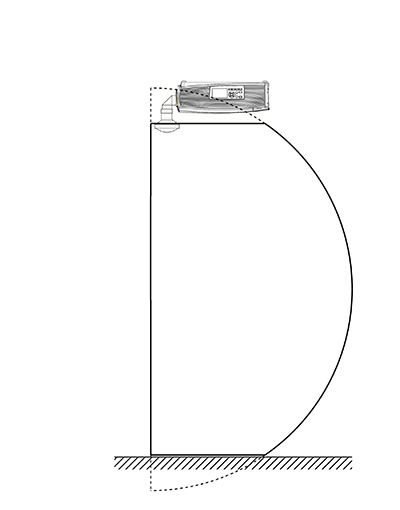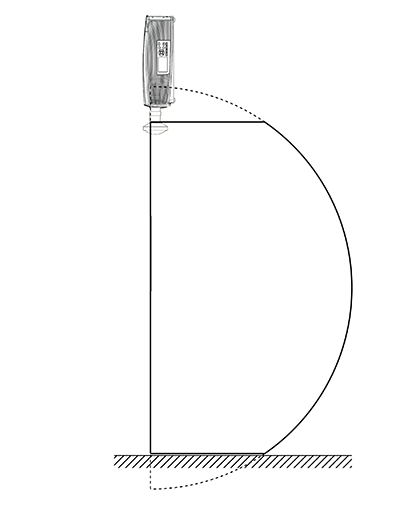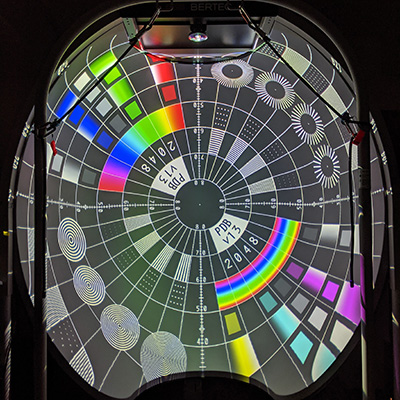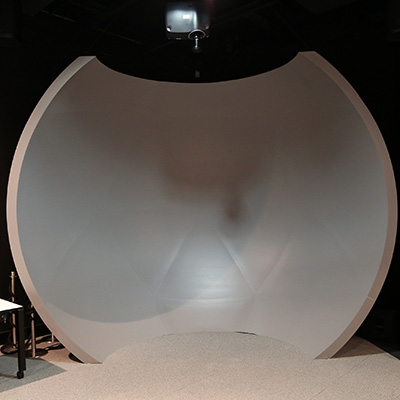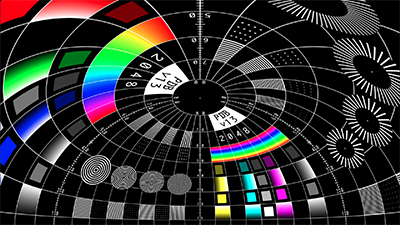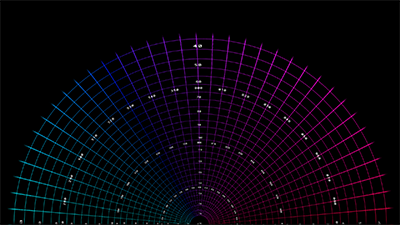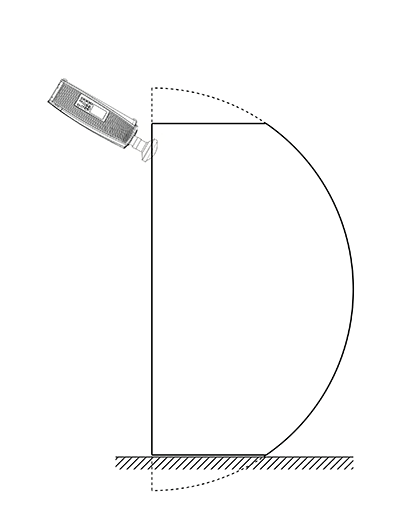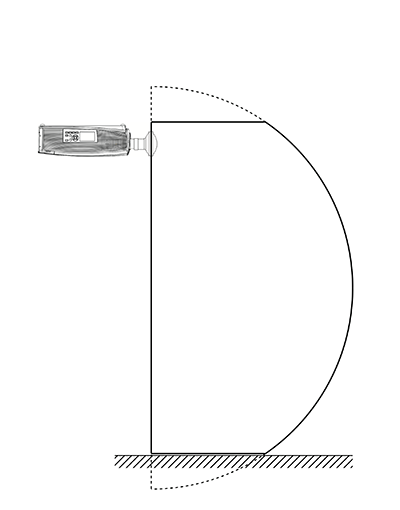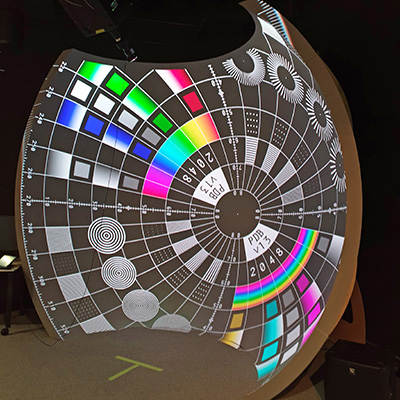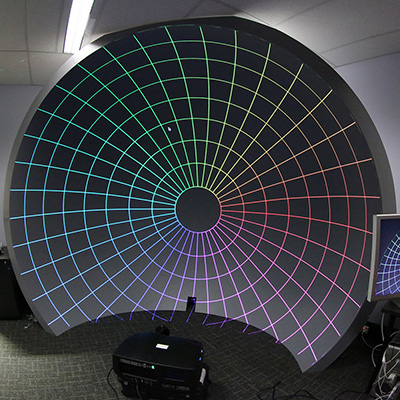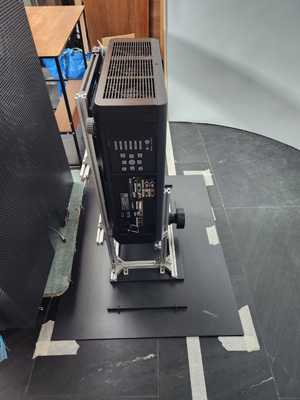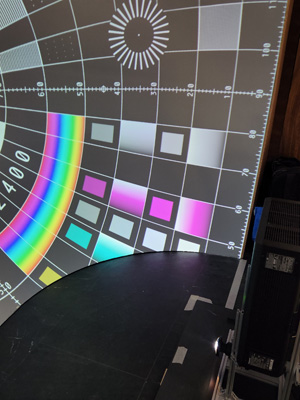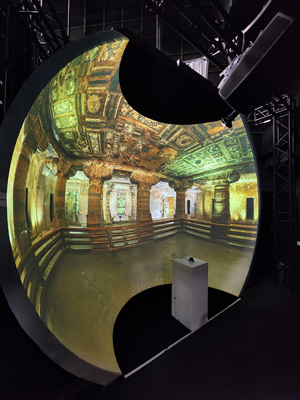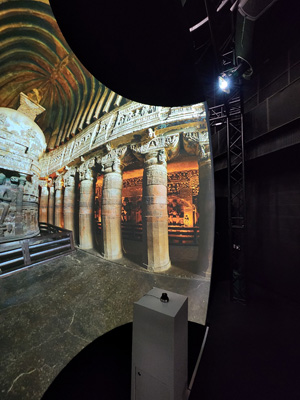Dome Projection and Calibration for Offaxis Fisheye LensesWritten by Paul BourkeMarch 2020
Hemispherical dome projection can be achieved with both multiple data projectors as well a single projector with a fisheye lens. Single projector systems have many advantages, in particular, they are simpler and generally have a lower cost of ownership and require a simpler software stack. The often quoted advantage of multiple projector systems is higher resolution but that comes at the expense of requiring edge blending which is rarely perfect. For many applications the recent availability of 4K (and higher) projectors provides a comparable result with a single projector. Unlike the planetarium industry where single projector systems are typically located in the center of the dome. For some dome configurations, for example for small personal domes such as the iDome, the center is ideally the space occupied by the viewer. The approach then is to locate the projector and fisheye lens either above the dome or, in the case of folded optics, under the floor at the base of the dome. In all cases the fisheye lens needs to have sufficient field of view and be positioned so that the entire dome surface is illuminated. In the case where the fisheye has 180 degree field of view horizontally, it generally then has 110 degrees field of view vertically (depends on exact aspect ratio). In all cases the fisheye image to be projected onto the dome, through the lens, needs to be warped so as to provide the correct result on the dome surface. The following presents a tool by the author to facilitate this warping. The options simultaneously include offine warping, mesh generation and GLSL shaders for realtime warping. The approach is to derive the warping by parameterisng all the relevant geometric and optical properties such as lens position and angle, dome radius, projector aspect ratio and degree of truncation. Installations using this solution are illustrated below. Vertically orientated projector
The main advantage of these options is the projection hardware doesn't impact on the space in front of the dome. Horizontal or tilted orientated projector
In general these offer better pixel efficiency, at the expense of placing the projector in a slightly more intrusive position.
Warped fisheye for the above configuration. 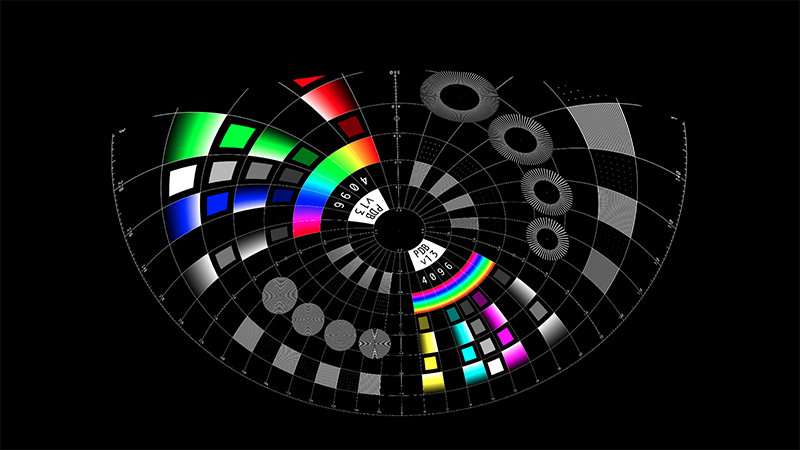
Traditional planetarium dome configuration
An example of a more traditional planetarium dome configuration using an offaxis fisheye lens is shown below. This is similar to the OmniMax theatre arrangement, in this case with just a 15 degree tilt. 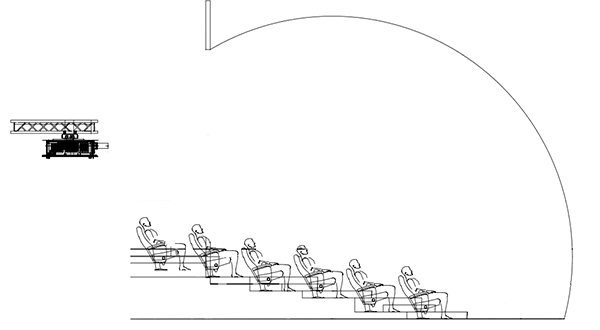
The control panel illustrating the parameter adjustments is shown below. One adjusts the relevant geometric and optical parameters until a known test pattern (polar grid) looks correct in the dome. Note: this control panel is on the primary display of the computer, the secondary display on which the warped image is sent is connected to the projector. The main reason for being able to adjust parameters is that many are difficult to measure accurately. Good examples are lens field of view and lens shift. But even measurements of projector distance require knowledge of the exit pupil of the fisheye lens. 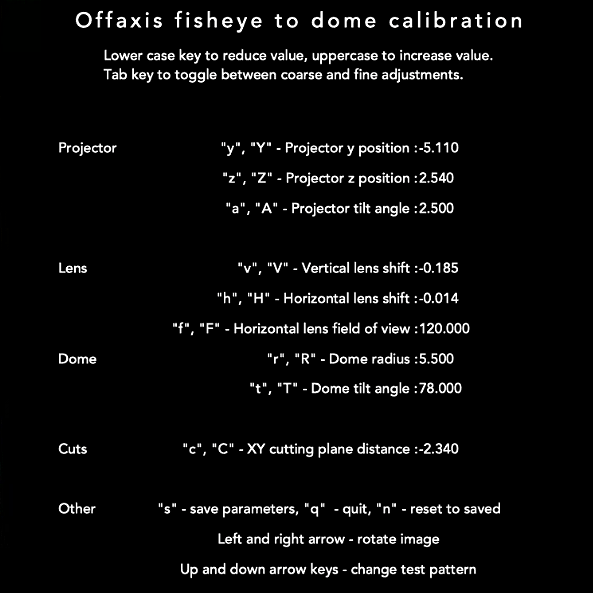
The view on the dome is shown below. Obviously it doesn't appear correct from this viewpoint, at the center of the dome the radial lines should be straight and tangential to the spring line, and the rings should be circular. 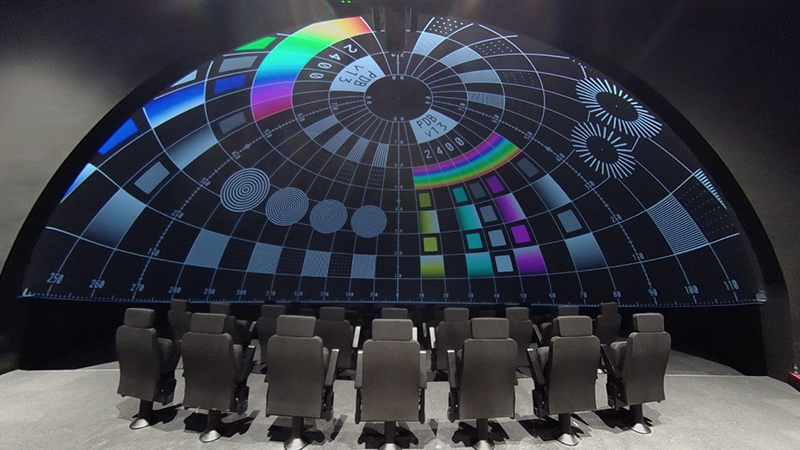
The warped fisheye test image (found here) in this example is shown below. 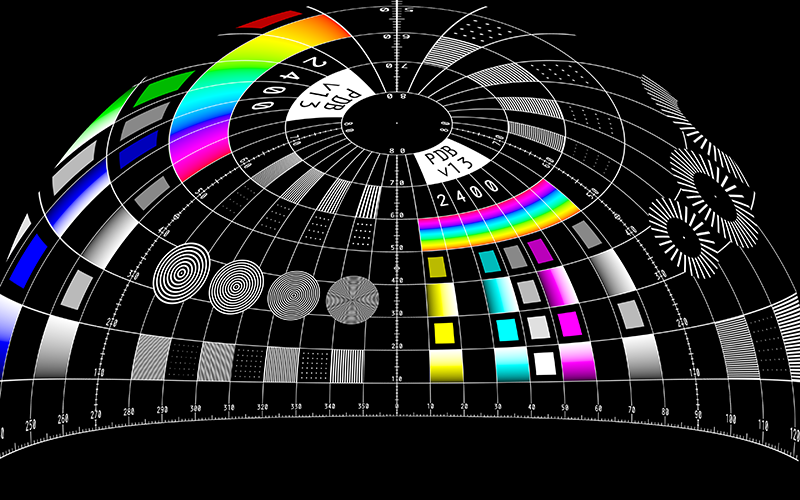
Pixel Efficiency In some cases there are multiple projector/fisheye lens options. In those cases it is useful to be able to identify the most pixel efficient. That is, the configuration that uses the most pixels or has the smallest pixel area range. 1. Simplest mounting case. Projector well out of the way, but poor pixel efficiency. 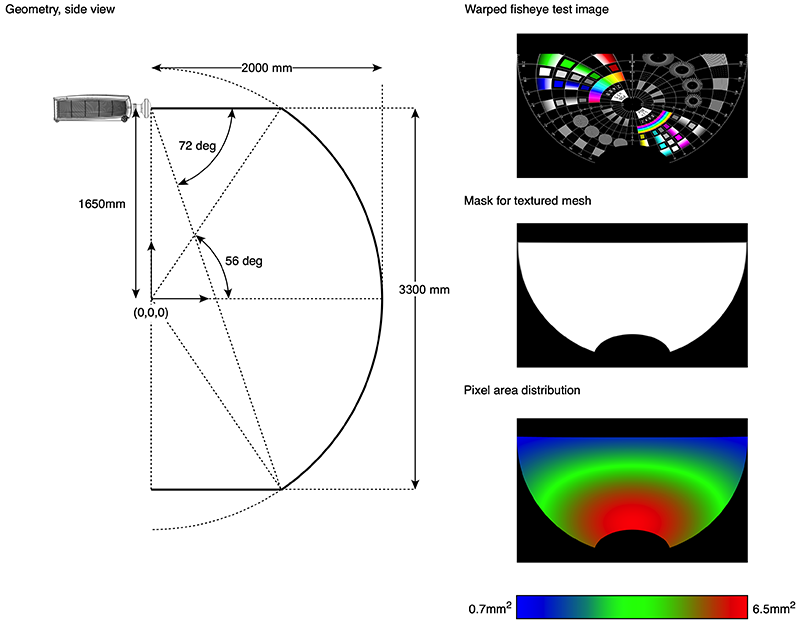
2. Upside-down folded fisheye. Essentially the same as (1) but mirrored across the horizontal plane. But more desirable for some content because the smaller pixels are towards the bottom of the dome, don't need high resolution for "sky". 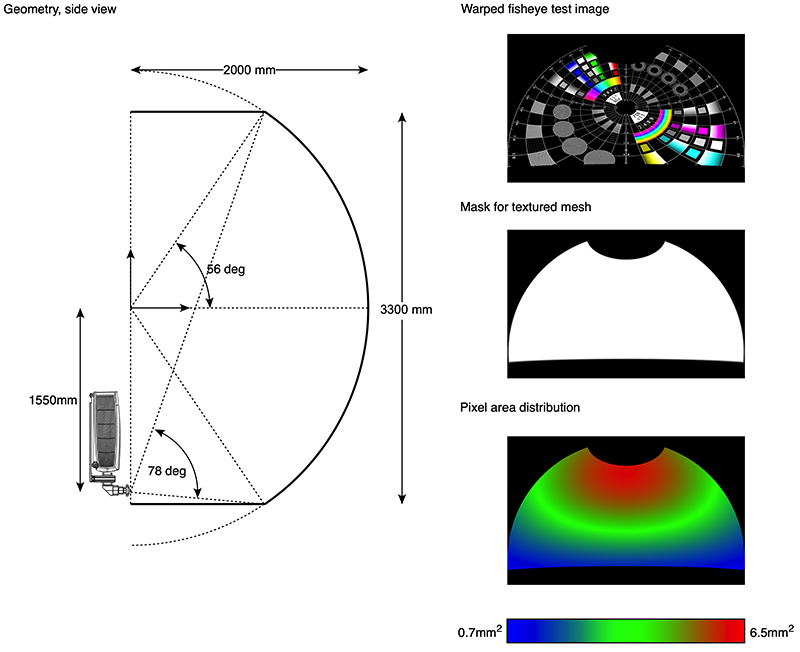
3. Pixel optimised arrangement. 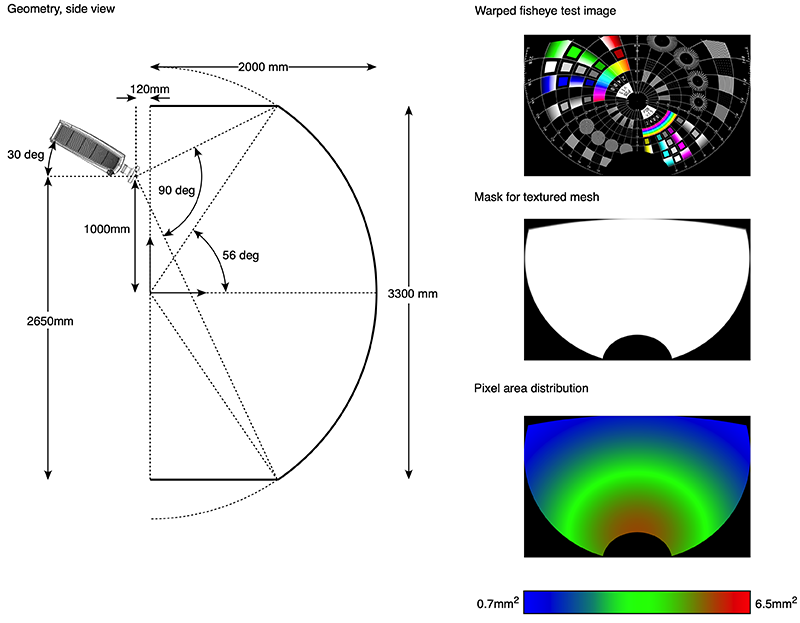
Update to the calibration tool, March 2023
Changes include the ability to create a cutting plane at the top and bottom of the dome (see examples above), and to compensate for a projector that may not be perfectly level. 
|
